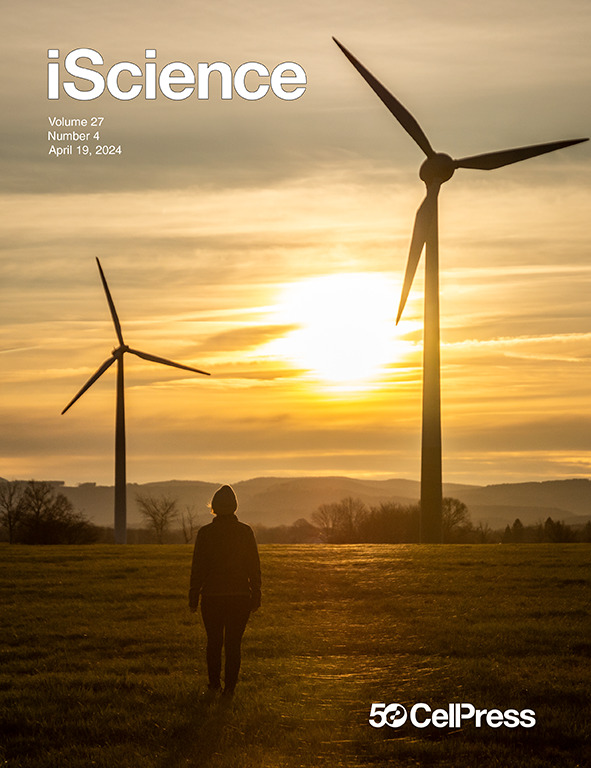揭开生物灵感的面纱:从雌蝗虫的产卵机制看大自然的设计
IF 4.6
2区 综合性期刊
Q1 MULTIDISCIPLINARY SCIENCES
引用次数: 0
摘要
研究大自然的巧妙设计和系统已成为创新的基石,影响着从机器人学、生物力学、物理学到材料科学的各个领域。然而,关于生物启发创新的两个关键问题是:如何以及从哪里找到生物启发?本文提出的观点旨在让人们深入了解生物灵感发现的演变过程。我们介绍了雌蝗虫产卵的独特案例,以此作为研究人员和工程师寻求多方面研究的宝贵范例,其中包括生物和生物启发系统的不同方面。雌蝗虫将卵产在地下,以保护它们,并为它们提供最佳的生存和孵化条件。为此,雌蝗虫使用一种由两对特殊的挖掘阀组成的专用装置在地下繁殖,同时将腹部的长度惊人地延长了 2 到 3 倍。独特的挖掘机制、地下转向能力和腹部的极度伸长,包括腹部中枢神经系统的可逆延伸,都引发了有关这一复杂生物系统的材料、形态、机制及其相互作用的各种问题。我们介绍了为阐明这些引人入胜的问题所做的跨学科努力,并为在这一非凡的生物系统基础上开发生物启发技术创新提供了未来方向。本文章由计算机程序翻译,如有差异,请以英文原文为准。

Bio-inspiration unveiled: Dissecting nature’s designs through the lens of the female locust’s oviposition mechanism
Investigating nature’s ingenious designs and systems has become a cornerstone of innovation, influencing fields from robotics, biomechanics, and physics to material sciences. Two key questions, however, regarding bio-inspired innovation are those of how and where does one find bio-inspiration? The perspective presented here is aimed at providing insights into the evolving landscape of bio-inspiration discovery. We present the unique case of the female locust’s oviposition as a valuable example for researchers and engineers seeking to pursue multifaceted research, encompassing diverse aspects of biological and bio-inspired systems. The female locust lays her eggs underground to protect them and provide them with optimal conditions for survival and hatching. To this end, she uses a dedicated apparatus comprising two pairs of special digging valves to propagate underground, while remarkably extending her abdomen by 2- to 3-fold its original length. The unique digging mechanism, the subterranean steering ability, and the extreme elongation of the abdomen, including the reversible extension of the abdominal central nervous system, all spark a variety of questions regarding materials, morphology, mechanisms, and their interactions in this complex biological system. We present the cross-discipline efforts to elucidate these fascinating questions, and provide future directions for developing bio-inspired technological innovations based on this remarkable biological system.
求助全文
通过发布文献求助,成功后即可免费获取论文全文。
去求助
来源期刊

iScience
Multidisciplinary-Multidisciplinary
CiteScore
7.20
自引率
1.70%
发文量
1972
审稿时长
6 weeks
期刊介绍:
Science has many big remaining questions. To address them, we will need to work collaboratively and across disciplines. The goal of iScience is to help fuel that type of interdisciplinary thinking. iScience is a new open-access journal from Cell Press that provides a platform for original research in the life, physical, and earth sciences. The primary criterion for publication in iScience is a significant contribution to a relevant field combined with robust results and underlying methodology. The advances appearing in iScience include both fundamental and applied investigations across this interdisciplinary range of topic areas. To support transparency in scientific investigation, we are happy to consider replication studies and papers that describe negative results.
We know you want your work to be published quickly and to be widely visible within your community and beyond. With the strong international reputation of Cell Press behind it, publication in iScience will help your work garner the attention and recognition it merits. Like all Cell Press journals, iScience prioritizes rapid publication. Our editorial team pays special attention to high-quality author service and to efficient, clear-cut decisions based on the information available within the manuscript. iScience taps into the expertise across Cell Press journals and selected partners to inform our editorial decisions and help publish your science in a timely and seamless way.
 求助内容:
求助内容: 应助结果提醒方式:
应助结果提醒方式:


